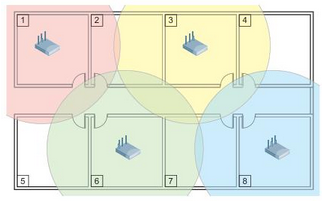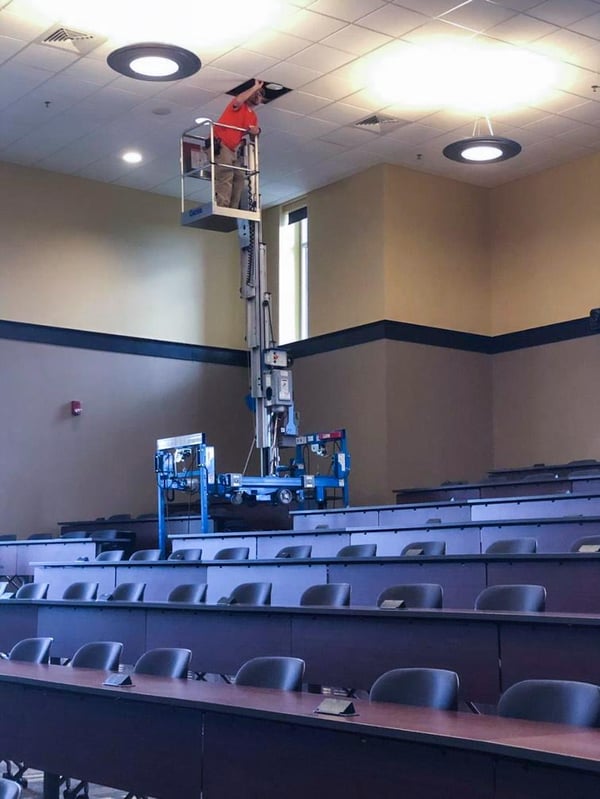When it comes to wireless network design, merely relying on free vendor software to place your access points and calling it a day isn’t going to cut it for most environments.
Unfortunately, this is a problem we run into a lot, mostly from inexperienced consultants or MSPs trying to be something they’re not.
So, where do you place your wireless access points to support maximum wireless performance? Although this is a common question, the answer varies because all wireless environments are unique.
Even though there is no one size fits all per se, there are some situations where best practices can apply.
Here are 3 common wireless network design mistakes you should avoid when trying to decide where to place your WLAN’s access points.
Placing AP’s in the Hallway
The first question you have to answer is, where do your users spend most of their time, in the hallways, or in the rooms? Although this is an easy question, so many people still seem to ignore the answer inside each room.
The location plays a big part, but so does the type of access point. Ever since the 802.11ac (WiFi 5) WiFi standard, the performance features available have made room placement over hallway placement the clear choice.
Here are a few reasons why:
Channel Interference
By placing your access points in the room, you can limit or avoid entirely both co-channel and adjacent channel interference associated with older, less efficient models. Room installation provides a natural buffer to the signal by using the walls to further reduce channel interference.
Low Powered Devices
We always recommend designing to the lowest powered devices, in today’s world, those would include smartphones, tablets like iPads, and wearables. These types of devices need to be closer to the AP to get the best performance from them.
RF Management
With the WiFi 5 standard (WiFi 6 or 802.11ax is now the latest standard), we can send out RF signals everywhere.
Because of this, WiFi 5 and better APs can automate their power levels to avoid adding interference.
This is great, but it does reduce the RF in terms of coverage and thus signal to your users. By placing your APs in the room, you can solve this problem for good.
Ultimately room placement provides better performance for your users where they need it the most and provides ample coverage in your hallways, as seen in the graphic below.

In some cases, it should be said that hallway placement can be acceptable, usually in an office where coverage is your main objective, and your APs wouldn’t be too close together.
Placing AP’s on the Walls
Let’s just get this out of the way, no access point or antenna is perfect for all locations. Some manufacturers say access points can be deployed both on the wall and on the ceiling, but this typically isn’t the case without sacrificing some performance.
From what we’ve seen, placing AP’s on the ceiling provides the best experience to your users. Mostly because there are fewer things that can get in the way of the RF signal, providing a clear, direct path to the devices below.
However, sometimes there are situations where the ceiling isn’t an option. In this case, you have to be more strategic with the type of antenna you choose and where you place it on the wall.
For example, you might want to place your AP’s on two adjacent walls so you can ensure your end users still have a direct signal path.
Placing AP’s Above the Ceiling
In almost every scenario where this question comes up, our answer is going to be to install your access points below the ceiling.
Why?
Mostly this is because of what we’ve seen in the field, but also it’s from what the manufacturers recommend in terms of best practices.
Installing your access points below the ceiling has many advantages and benefits.
For example, placing an AP below the ceiling limits obstructions from things like HVAC ducts, utility pipes, and various metal fixtures that can negatively impact your RF signal and, therefore, your wireless performance.
“Below the ceiling” installations also allow you to avoid placing your APs in a harmful environment full of dust, warmer temperatures, and unshielded electrical components.
All of these things can lead to poor performance and potentially broken access points.
Ultimately there are several things to think about when determining where to place your access points. Success starts with proper planning and an adequate assessment of your current environment.
A site survey will ensure you have the perfect WLAN design to support your needs, including the right type of access point and how many you’ll need.
*This blog post was originally posted in March of 2016 and has been completely revamped and improved for accuracy and thoroughness.




